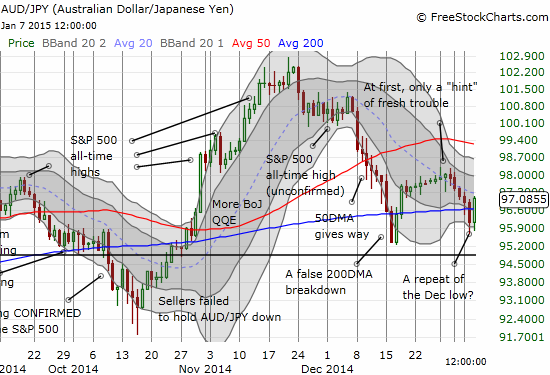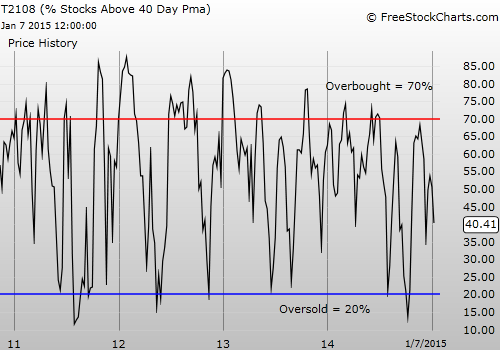T2108 Status: 40.4% (ended quasi-oversold period with a gain against a predicted 71% odds of a decline)
T2107 Status: 45.4%
VIX Status: 19.3 (gapped down and lost 8.6%)
General (Short-term) Trading Call: Hold – see caveats below
Active T2108 periods: Day #55 over 20%, Day #14 above 30%, Day #1 above 40% (overperiod), Day #5 under 50%, Day #23 under 60%, Day #125 under 70%
Commentary
Just as I was bracing for more losses, the stock market of course threw a surprise yesterday. The S&P 500 gapped up and gained 1.2% to reverse all of the previous day’s losses while bouncing off “support” from the start of the Santa Claus rally. T2108 surged over the 40% threshold. Perhaps most importantly, the volatility index, the VIX, gapped down for a 8.6% loss. Suddenly, I now have to consider that a bottoming process from the latest pullback may already be underway.
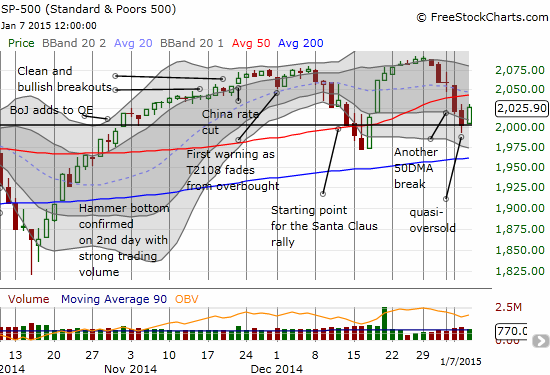
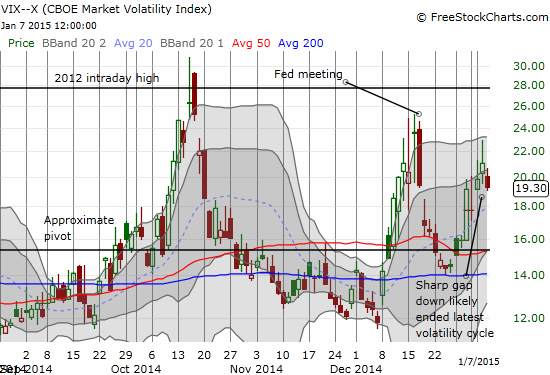
The volatility index gapped down – likely bringing the latest up-cycle to an end. Before I continue, I need to point out something I completely missed from the previous day’s close. I showed how the S&P 500 was rebounding nicely off its lows in tight concert with my favorite indicator from the currency market, the Australian dollar (NYSE:FXA) versus the Japanese yen (AUD/JPY). However, I completely missed the strange nature of the close in the final minutes. As usual, I have to use (ARCA:SPY) to make it plain as the open and close on the S&P 500 did not do the trading action any justice.
In the 15-minute chart below, SPY started a sudden reversal at 3:30pm Eastern time yesterday. Volume surged as it often (usually?) does in the final 15 minutes. I include yesterday's earlier trading for comparison. Note how the gap up in SPY started trading as if the previous 30 minutes never happened. It was if someone (or some people) were forced out (washed out) into the close. If I had noticed the potential purge, I would have been a little more hopeful for a positive day of trading despite the T2108 Trading Model’s prediction for a down day.
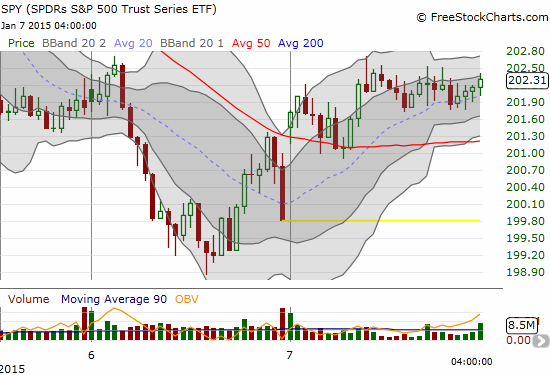
SPY gapped up and immediately erased the impact of the previous day’s closing action. The strongest case for a bottoming comes from AUD/JPY. Note that just like the December low, AUD/JPY it broke down below the 200DMA and jumped right back over it the following day.
My favorite stock indicator Caterpillar, Inc. (NYSE:CAT) is even winking at a bottom. The stock printed a hammer pattern the previous day and confirmed the bottoming pattern opening higher (ever so slightly) and finishing with a gain on higher volume. This puts in play at least a fill of Monday’s calamitous gap down and plunge.
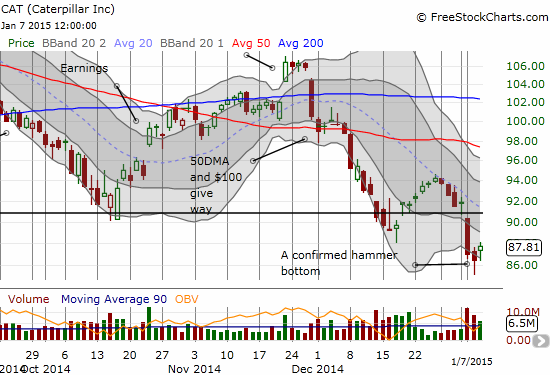
Finally, it is interesting to note how the S&P 500 is still “loitering” around the levels it traded when the Bank of Japan pumped up its program of quantitative easing and soon thereafter China cut rates. And now the support line from the Santa Claus rally may even prove important for trading in the near-term.
Since I am expecting an extended period of chop, I am not getting overly excited. Note that the S&P 500 must now contend all over again with overhead resistance at the 50DMA. Bulls have a very clear stop below January’s low. Bears need to look out for yet another downside fake-out.
Speaking of bottoms, I have become VERY intrigued by gold's ability to consolidate in the last two months even as the U.S. dollar index has soared about 7%. I am definitely NOT going to call a bottom in gold, but it is definitely tradeable to the long side here (with stops in place adjusted to risk tolerance of course). If SPDR Gold Trust (ARCA:GLD) manages to breakout from its 200DMA (another 4% higher), I might even have to turn full out bullish (for the short-term).
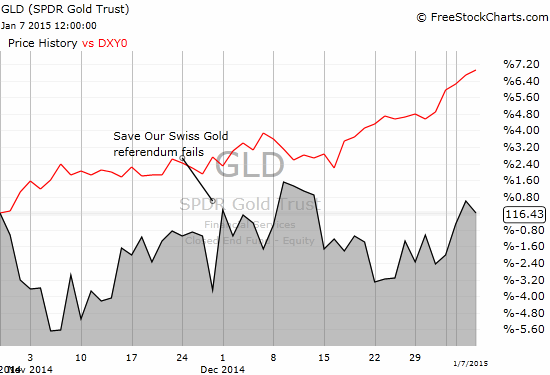
SPDR Gold Trust (GLD) is flatline since the end of October even as the U.S. dollar has soared 7%. Gold may actually have begun to bottom here and is likely tradeable from the long side
Daily T2108 vs the S&P 500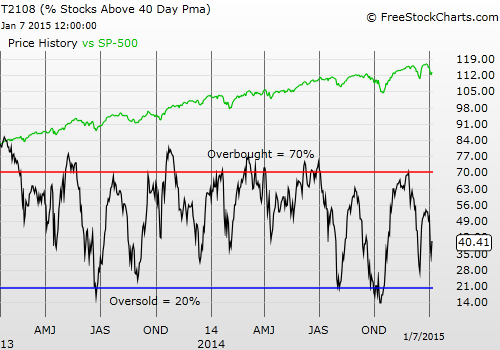
Black line: T2108 (measured on the right); Green line: S&P 500 (for comparative purposes)
Red line: T2108 Overbought (70%); Blue line: T2108 Oversold (20%)
Weekly T2108
Disclaimer: long GLD, net short Australian dollar and Japanese yen, net long U.S. dollar, long SVXY, long UVXY put options

